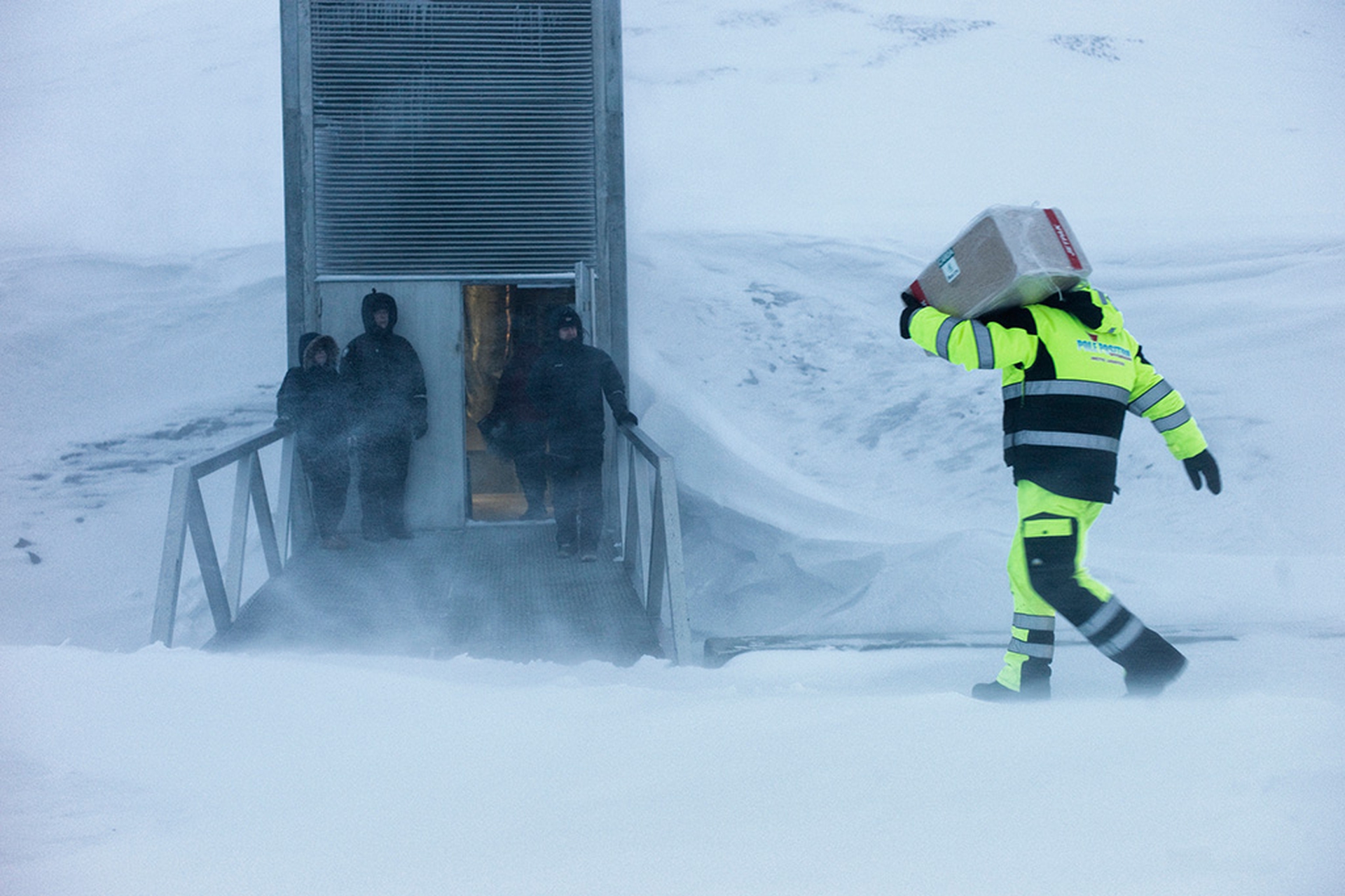
The world used to cultivate around 7,000 different plants but experts say we now get about 60 per cent of our calories from three main crops - maize, wheat and rice - making food supplies vulnerable if climate change causes harvests to fail. The vault also serves as a backup for plant breeders to develop new varieties of crops. Since then, researchers there have been storing containers of seeds from all parts of the globe in the. The Royal Botanical Gardens at Kew in Britain will bank seeds harvested from the meadows of Prince Charles' private residence, Highgrove, including from grass species, clovers and broad-leaved flowering herbs. The seed vault - located in Norway, sometimes called the Doomsday Vault - was built in 2008. Stefan Schmitz, Crop Trust executive director The seed vault is the backup in the global system of conservation to secure food security on Earth. In the northernmost town on Earth, on the Norwegian island of Spitsbergen, the Svalbard Global Seed Vault protects around 865,000 seed. On Tuesday 30 gene banks will deposit seeds, including from India, Mali, Peru and the Cherokee Nation in the United States, which will bank samples of maize, bean and squash. The Svalbard Global Seed Vault, built on an Arctic mountainside in 2008, was designed as a storage facility to protect vital crop seeds against the worst cataclysms of nuclear war or disease and safeguard global food supplies.ĭubbed the "doomsday vault," the facility lies on the island of Spitsbergen in the Arctic archipelago of Svalbard, halfway between Norway and the North Pole, and is only opened a few times a year in order to preserve the seeds inside.
#YOU TUBE DOOMSDAY VAULT FOR SEEDS UPGRADE#
It serves as a backup for plant breeders to develop new varieties of crops.Ī withdrawal was made from the vault in 2015 after Syria’s civil war damaged a seed bank near Aleppo.Ī year-long upgrade to the vault - at a cost of $11 million - was made in October, 2019 by Norway.A vault in the Arctic built to preserve seeds for rice, wheat and other food staples will contain one million varieties with the addition on Tuesday of specimens grown by Cherokee Indians and the estate of Britain's Prince Charles. The Arctic’s climate keeps it cold in case of a power failure. The vault is artificially cooled at temperatures of below 18 degrees Celsius. The doomsday vault exists to serve as backup storage for plant genebanks all around the world, especially for food crops.

“The Seed Vault and seed banks around the world play a vital role in this critically important mission,” he said in a statement. Prince Charles – known to be an environmental activist - donated 27 seed varieties from the Royal Botanical Gardens, which came from his private residence in UK’s Highgrove. claiming in a YouTube video posted Friday they have built a new vault just for. Way up north, in the permafrost, 1300 kilometers beyond the Arctic Circle, is the worlds largest secure seed storage, opened by the Norwegian Government in. The US group donated nine varieties, including a sacred Cherokee White Eagle Corn, beans and squash, reported tech website The Verge. Both will be adjacent to the more famous Svalbard Global Seed Vault that. The US group of the Cherokee Nation and Prince Charles were among those who donated the 60,000 seed samples. The Guardian also explains that the site was built to be disaster-proof: 130.

There are nearly 160,000 samples of wheat, and approaching 150,000 samples of rice. The vault contains tens of thousands of seeds from thousands of different seed types and has the capacity to store 4.5 million different seed types. On arrival at the vault, the seeds were plunged to a. On the Norwegian island of Spitsbergen, the Svalbard Global Seed Vault protects around 865,000 seed samples from all over the world. The vault - in the island of Spitsbergen, midway between Norway and the North Pole - opened in 2008 and preserves seeds for several food varieties. The late Kenyan environmental activist and Nobel laureate Wangari Maathai made the first deposit, a box of rice seeds, in February 2008. “We need to preserve this biodiversity to provide healthy diets and for providing farmers with sustainable livelihoods so that they can adapt to new conditions,” said Stefan Schmitz, executive director of the Crop Trust, the organisation that manages the vault. Built beneath a mountain on an Arctic island halfway between Norway and the North Pole, the Svalbard Global Seed Vault currently stores over 800,000 seed samples from 5,100 species of crops and. On February 25, 30 gene banks deposited seeds, including samples from India, Mali and Peru, reported news agency Reuters.

The aim of the vault is to preserve a vast variety of crop seeds in the case of a doomsday event, calamity, climate change or national emergency.Ī fresh stock of 60,000 new seed samples from 36 different institutions worldwide was deposited to the reserve vault of seeds in February 2020. The Svalbard Global Seed Vault - referred to as the earth's ‘doomsday vault’ - now contains about 1.05 million seeds.


 0 kommentar(er)
0 kommentar(er)
